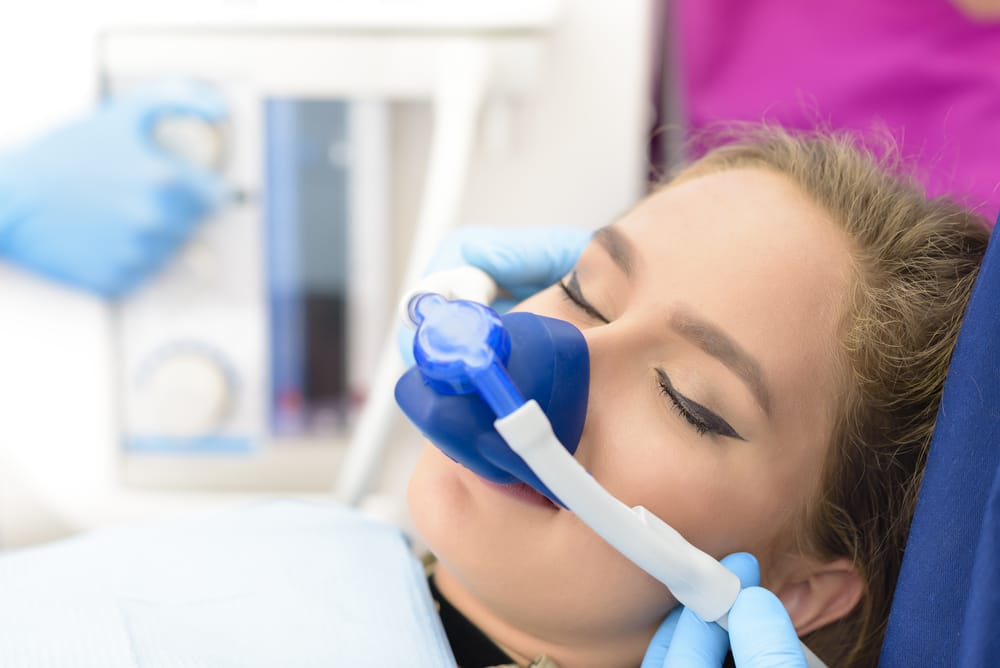
Having a dental emergency? Call us!
614-882-1135
We understand that dental emergencies can happen at any time. If you're in need of urgent care, give us a call, and we'll do everything we can to assist you when it matters most.
Patient Testimonials
Discover Better Dentistry
Become a part of the
Westerville Dental family!
We're accepting new patients. Our dental team prides itself on delivering a truly efficient and enjoyable experience while you’re with us.

Going to the dentist can be a nerve-wracking experience for many people. However, with sedation dentistry, you can relax and feel at ease during your dental procedure. In this ultimate guide to sedation dentistry, we will go over everything you need to know about this helpful technique. From understanding what sedation dentistry is and why it’s needed in some cases to the different types of sedation available. We’ll also cover the procedure for administering sedation and the safety measures to ensure a successful outcome. Lastly, we’ll discuss whether or not sedation dentistry is suitable for everyone. So sit back, relax, and read on to learn how sedation dentistry can make your next trip to the dentist a breeze.
Defining Sedation Dentistry
Sedation dentistry involves using sedation to help patients with dental anxiety, fear, or special needs receive dental care comfortably. Different types of sedation, such as oral sedation and nitrous oxide, create a relaxed, anxiety-free dental experience. It is ideal for patients requiring extensive dental work or having dental phobia.
The Need for Sedation in Dentistry
Patients commonly experience dental anxiety, but sedation dentistry offers a solution to overcome it. From routine cleanings to complex surgeries, different types of sedation, like nitrous oxide and IV sedatives, can be used. It benefits patients with medical conditions and ensures a comfortable dental experience. Dentists evaluate suitability and discuss available options.
Types of Sedation in Dentistry
Regarding sedation dentistry, various forms of sedation are available to ensure patient comfort. Nitrous oxide, also known as laughing gas, provides mild sedation, while oral sedation induces relaxation and drowsiness in pill form. IV sedation offers a deeper level of sedation, and general anesthesia renders patients utterly unconscious for complex procedures. The right type of sedation depends on the patient’s anxiety levels, medical history, and the complexity of the dental procedure.
Oral Sedation
Oral sedation involves taking a pill to induce relaxation and drowsiness during dental procedures. It can benefit patients with dental anxiety or medical conditions. Common medications include Valium and Halcion. Risks may include dizziness and drowsiness, so preparing for recovery is crucial. Recovery involves resting and refraining from driving.
Nitrous Oxide Sedation
Nitrous oxide, commonly known as laughing gas, is a prevalent form of sedation in sleep dentistry. Administered through a small mask placed over the nose, it induces relaxation and euphoria while maintaining consciousness. The effects wear off swiftly after removal, allowing patients to resume regular activities without lingering side effects. Generally safe, it may not be suitable for specific medical conditions or pregnancy.
IV Sedation
IV sedation, a form of conscious sedation, involves administering medication through an intravenous line. This tailored approach suits individual patient needs and is commonly used for complex dental procedures or anxious patients. A responsible adult should accompany the patient; discussing medical conditions and medications with the dentist is crucial for a safe procedure.
Procedure of Sedation Dentistry
Before the procedure begins, the dentist will review the patient’s medical history, discuss any concerns, and determine the most suitable form of sedation. During the sedation, vital signs such as blood pressure, heart rate, and level of consciousness will be closely monitored. The patient will be observed post-sedation until they are fully alert and ready to leave.
Pre-Sedation Process
Preparing for sedation involves a discussion between the patient and the dentist, followed by a review of the patient’s medical history. The type of sedation and its dosage are determined based on the patient’s needs. Patients are advised to avoid eating or drinking anything for a certain period before the sedation.
During Sedation
Feeling relaxed and comfortable in the dental chair is crucial. Monitoring vital signs, such as blood pressure and heart rate, is essential during sedation. The friendly staff ensures your well-being while you experience moderate sedation. From local anesthesia to intravenous sedation, different levels of sedation are carefully administered for your safety and comfort.
Post-Sedation Observations
After sedation, closely monitor the patient’s recovery. Check vital signs and note their response. Ensure full consciousness before they leave. Watch for any unusual symptoms or side effects. These observations enhance sleep dentistry’s safety and improve patient care and satisfaction.
Safety Measures and Risks in Sedation Dentistry
Proper safety measures in sleep dentistry involve meticulously monitoring medical history and vitals while considering potential risks, such as anesthesia-related complications. Qualified professionals and adherence to guidelines effectively minimize these risks, ensuring patient safety and comfort in the dental chair. Understanding these safety measures and potential risks is crucial for patients and healthcare providers.
Advantages and Potential Risks
Sleep dentistry’s vital benefits are reducing anxiety and increasing comfort during dental procedures. However, potential risks like allergic reactions must be carefully considered. Consultation with a friendly staff at the American Dental Association can help assess suitability. Understanding both advantages and potential risks is crucial for informed decisions, making sedation dentistry a safe and reliable choice.
Is Sedation Dentistry Right for Everyone?
Determining the suitability of sedation dentistry involves assessing medical history, dental anxiety, and individual needs. It can be particularly beneficial for patients with special needs or needle phobia. Evaluating sedation type, effects, and amount is crucial. Openly discussing concerns with a qualified dentist can help make an informed decision.
Conclusion
In conclusion, sedation dentistry offers a safe and effective solution for patients who experience dental anxiety or phobia. It allows individuals to receive the necessary dental care without fear or discomfort. However, consulting with your dentist to determine if sedation dentistry is the right option for you based on your specific needs and medical history is essential. Remember, your oral health is crucial, and neglecting dental treatment due to anxiety can lead to more severe issues in the long run. Don’t let fear hold you back from achieving a healthy smile. Take the first step towards overcoming your dental anxiety by discussing sedation dentistry with your dentist today.


 Meet Dr. Stickel
Meet Dr. Stickel Meet Dr. Zody
Meet Dr. Zody Meet Dr. Choi
Meet Dr. Choi Meet Dr. Son
Meet Dr. Son
